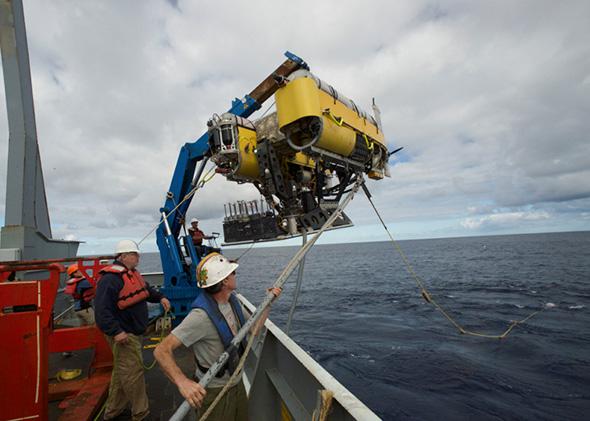Victor Zykov is director of research at the Schmidt Ocean Institute in Palo Alto, California. He heads a team developing a remotely operated, full ocean depth robotic vehicle. They aim to improve on a deep-sea exploration vehicle that imploded this year. He explains how they aim to build one that’s more than a match for the pressure.
You are building a successor to the deep-ocean research vehicle Nereus, lost off New Zealand this year. What happened to it?
It imploded in the Kermadec trench. The formal investigation is still underway, but the preliminary findings suggest that parts of the vehicle meant to maintain atmospheric pressure may have failed. It was about 10,000 meters down, where the pressures are immense—like having three Humvees stacked on top of one another pressing on a thumbnail. And the pressure is applied and released over and over again as the vehicle goes up and down in the water. That creates stress fatigue and over time small cracks can spread.
What does this loss mean for ocean science?
It was the only vehicle active and available to the international scientific community to conduct research in water deeper than 6,000 meters, also known as hadal depths. There were five projects planned for Nereus; 2014 would have been the first year of really advanced operations, so its loss was a major blow. You might think the film director James Cameron’s Deepsea Challenger sub, which took him to the bottom of the Mariana trench in 2012, could fill the gap, but it was never intended for long-term use.
Now you are designing an improved version. What will make it more robust at great depth?
For buoyancy, instead of ceramics or hollow glass spheres, we plan to use an advanced material called syntactic foam—an epoxy resin with tiny hollow glass microspheres in it. The latest version of this can survive at depths of 11,000 meters, and even if some of the glass spheres fail under pressure, they don’t usually all fail at once.
Also, our camera enclosures will be much smaller, using miniaturized technology deriving from Deepsea Challenger, and will be made of either sapphire or acrylic. Compared with glass, both materials are more consistent and have more predictable mechanical properties.
Are there other improvements?
As well as a navigation system that will be precise to within 10 meters—even at 11,000 meters down—and better batteries that don’t require a hefty pressure protection chamber, the support ship will have a control room with a nearly 180-degree field of view using high-definition screens in positions that match the placement of cameras on the vehicle. We are also installing 3-D video so that the pilot can perceive depth of image, too. We believe this will provide the operators with the best possible illusion of being in the deep ocean—without exposing them to the great risks of diving to hadal depths.
What is the new vehicle called, and when will it be ready for undersea exploring?
The current title is N11k, but that is more of a working vehicle designation than a name. I anticipate that we will have a competition with input from researchers, students, scientists, and so on to come up with something appropriate. The plan is to have it ready for ocean trials in early 2016 and for scientific projects later that year.
This article originally appeared in New Scientist.
